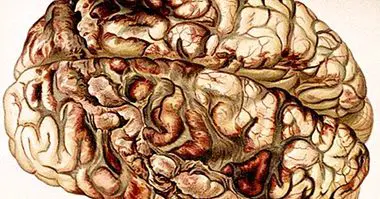Behavioral Activation: one of the most effective therapies against depression
Both depression and any of the conditions or disorders related to it, have been a great field of research from the point of view of psychological treatment. Throughout the history of psychology, researchers have struggled to develop an effective therapy, which alleviates the symptoms of this in the shortest possible time.
One of these recent treatments is Behavioral Activation . A therapy that starts from the idea that the modification of the patient's behaviors will have a positive effect on his mood.
- Related article: "Types of psychological therapies"
What is Behavioral Activation?
Behavioral Activation (CA) is a relatively new therapy, it does not have much more than 30 years of history behind it, which treats depression in a functional way and from the point of view of the context of the person.
According to the creators of this type of intervention, Behavioral Activation it is based on the context of the person to explain their symptoms . Thus, the therapy defends that acting on this context is much more effective than doing it on the symptoms or internal factors, such as neurobiological alterations or psychological symptoms.
In addition, the Behavioral Activation establishes that the behaviors carried out by people with depression are more than just symptoms of the clinical picture, and that these have a very important significance within the disorder.
- You may be interested: "Major depression: symptoms, causes and treatment"
How did it appear?
Behavioral Activation originated from behavioral techniques that take place within Aaron Beck's Cognitive Therapy.
The initial idea was to make a comparison between the behavioral part of the traditional intervention, the behavioral intervention along with the cognitive and the integral therapy. After making this comparison, the results showed that only carrying out a behavioral modification in the patient, this presented the same level of improvement as with the complete intervention.
Thus, it was concluded that cognitive modification or intervention techniques were not as necessary in the treatment of depression , assuming only a ballast for the treatment. After these conclusions, it was proposed to consider purely behavioral intervention as a therapy independent of traditional cognitive therapy, becoming what is now known as Behavioral Activation.
It is necessary to specify that although the Behavioral Activation does not work on the cognition of the person, it is not ignored. Rather, they are expected to change as a consequence of behavior modifications.
- Maybe you're interested: Behaviorism: history, concepts and main authors "
Principles of Behavioral Activation
There are two aspects to consider when starting an intervention through Behavioral Activation:
- The context or situation that causes the behavior.
- Functionality or effects have this behavior on the person.
In this way, Behavioral Activation evaluates and analyzes both the events that appear in the patient's life, as well as the behavioral responses that this one gives to these situations.
Regarding the person's responses, one of the basic principles of Behavioral Activation is that the person with depression carries out a series of avoidant behaviors consequence of the lack of positive reinforcement and of the predominance of little stimulating situations. This tendency towards avoidance can be manifested through the interruption of daily tasks and activities, through ruminative thoughts or through the interactions that the person maintains or not with the rest of people.
How is it carried out as a psychological intervention?
Taking into account the principle of behavioral avoidance, Behavioral Activation therapy aims to restore the behavioral dynamics of the person prior to depression .
The first step to achieve this is to activate the person, hence the name of the therapy, although it is depressed. Through this, the Behavioral Activation aims to systematically increase the number of positive behaviors carried out by the person with the intention that it finds a greater number of reinforcers that promote a change in the person at the level of behavior, cognition and mood.
However, the Behavioral Activation does not try to increase the number of behaviors of the person whatever the nature of these, but rather a functional behavioral analysis must be performed to detect those significant and functional behaviors which should be enhanced.
Therefore, Behavioral Activation is a therapy that develops and adapts to the patient's singularities.
Finally, the dynamics of the therapy is not to modify the cognition and the state of mind for the person to change their behavior, but to act in spite of the state of mind. This particular point is closely associated with Acceptance and Commitment Therapy, in which the person must first accept their current condition to act and be able to change it.
Advantages of this type of psychotherapy
Advocates of Behavioral Activation therapy rely on a series of advantages or benefits that it provides compared to other therapies such as pharmacological or cognitive.
These advantages are the following.
1. Demedicalization
Behavioral Activation is presented as an effective and fast alternative to pharmacological treatment for depression , being as effective as this and without causing unwanted side effects.
Therefore, this discourse in favor of demedicalization has won many adherents.
2. Alternative to cognitive therapy
As an alternative to cognitive therapy, Behavioral Activation has been much more effective and results much faster . Since the modification of thought and belief requires a greater investment of time.
3. Quick results
Thanks to the adjustment of the therapy to the needs of the patient and the structuring of this, the Behavioral Activation is a therapy that requires few sessions, about 15 , what supposes a rapidity in the results and an economic advantage in comparison with other forms of psychological intervention.



















